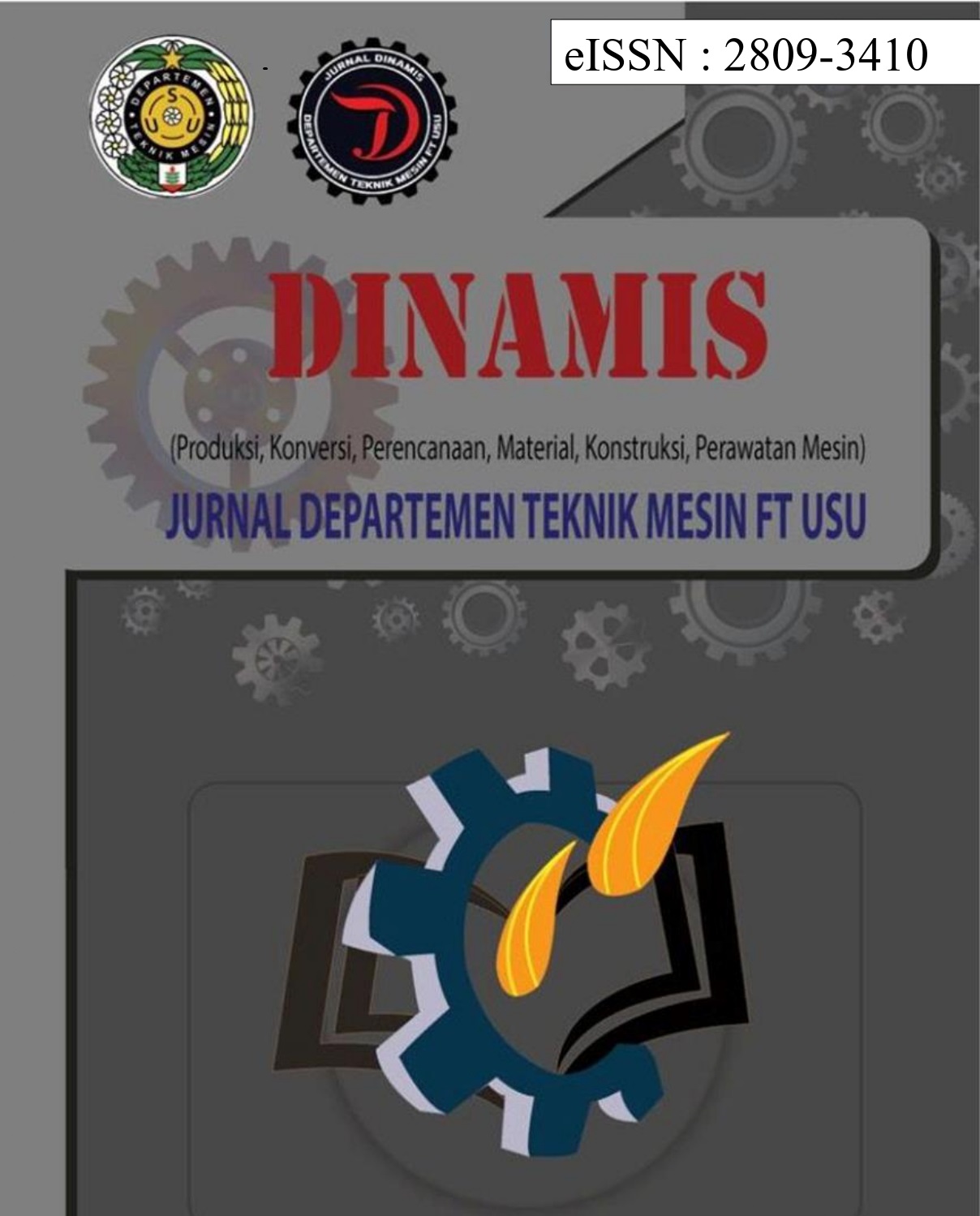The Influence of Steel Wool Fiber Length on The Characteristics of The Particle Board
DOI:
https://doi.org/10.32734/dinamis.v12i1.16532Keywords:
steel wool, composite, particle board, hardness, flexibilityAbstract
The use of wood powder can be reduced by a mixture of cinnamon, bamboo powder, and steel wool as a filling of the composite particle board. The length of steel wool in this study was determined by the size, i.e. 2, 4, and 6 mm. The composite composition comparison was 30% cinnamon powder, 30% bamboo Powder, 1% wool steel, 29% PVAc, and 10% epoxy resin. Compression process using the cold press single punch method for 2 hours then post curing process at a temperature of 150 oC for 1 hour. The results of this study show that steel wool length influences the characteristics of the particle board, both physical properties, mechanical properties, and morphological structure.
Downloads
References
R. M. Jones. Mechanics of Composite Materials, Second Edition., Taylor and Francis , Virginia, 1999.
T. M. Maloney. Modern Particleboard and Dry Process Fiberboard Manufacturing, Vol. 1., Miller Freeman Publication, San Fransisco, 1993.
S. Ruhendi and E. Putra, “Kualitas Papan Partikel Batang Bawah, Batang Atas dan Cabang Kayu Jabon (Anthocephalus cadamba Miq.)†Jurnal Ilmu dan Teknologi Hasil Hutan, vol. 4, no. 1, pp.14-21. 2011.
L. Baskorowati. Budidaya Sengon Unggul (Falcatariaa moluccana) untuk Pengembangan Hutan Rakyat., IPB Press, Jakarta, 2014.
D. F. Muhtar, Y. Sinyo, and H. Ahmad, “Pemanfaatan Tumbuhan Bambu oleh Masyarakat di Kecamatan Oba Utara Kota Tidore Kepulauan,†Jurnal Saintifik @ MIPA, vol. 1, no. 1, pp.37-44. 2017.
W. Fisch, W. Hofmann, and J. Koskikallio, “The Curing Mechanism of Epoxy Resin,†Journal of Applied Chemistry, vol. 6, no. 10, pp.429-441. 2007. doi: 10.1002/jctb.5010061005.
L. Hanif, and R. Rozalina, “Perekat Polyvinyl Acetate (PVAc),†Akar, Vol. 2, no. 1, pp.46-55. 2020.
M. Fitri, and L. Atmaja, “Polimerisasi Emulsi Polivinil Alkohol dan Monomer Vinil Asetat dalam Campuran Pelarut Etil Asetat-Air pada Sintesis Polivinil Asetat,†Jurnal Sains dan Seni Pomits, vol. 2, no. 1, pp.1-5. 2014.
E. A. Harita, R. Napitupulu, and S. D. Krishaningsih, “Pengaruh Perlakuan Alkali Terhadap Kekuatan Tarik dan Modulus Elastisitas Bahan Komposit Berpenguat Serat Bambu dan Filler Serabut Kelapa,†Prosiding Seminar Nasional Inovasi Teknologi Terapan, pp.321-327. 2022.
A. Garcia, J. N. Contreras, M. Bueno, and M. Parti, “Influence of Steel Wool Fibers on the Mechanical, Termal, and Healing Properties of Dense Asphalt Concrete,†Journal of Testing and Evaluation, vol. 42, no. 5, pp.1107-1118. 2014. doi:10.1520/JTE20130197.
S. Sunardi, M. Fawaid, and R. Lusiana, “Pengaruh Butiran Filler Kayu Sengon Terhadap Karakteristik Papan Partikel Yang Berpenguat Serat Tandan Kosong Kelapa Sawit,†Sintek Jurnal: Jurnal Ilmiah Teknik Mesin, vol. 11, no. 1, pp. 28-32. 2017.
R. Lusiani, Sunardi, and Y. Ardiansah, “Pemanfaatan Limbah Tandan Kosong Kelapa Sawit Sebagai Papan Komposit dengan Variasi Panjang Serat,†Jurnal Teknik Mesin Untirta, vol. 1, no. 1, pp.46-54. 2015.
F. A. Rauf, F. P. Sappu, and A. Lakat, “Uji Kekerasan dengan Menggunakan Alat Microhardness Vickers pada Berbagai Jenis Material Teknik,†Jurnal Tekno Mesin, vol. 5, no. 1, pp.21-24. 2018.
B. A. Panuntun, A. Rahmadi, and Z. Abidin, “Sifat Fisis dan Mekanis Papan Partikel dari Serbuk Kayu Karet (Hevea bransiliensis) dengan Berbagai Dosis Perekat Polyvinyl Acetate,†Jurnal Sylva Scienteae, vol. 4, no. 6, pp.1057-1066. 2021.
A. Rofaida, R. M. Pratama, I. W. Sugiartha, and D. Widianty, “Sifat Fisik dan Mekanik Papan Partikel Akibat Penambahan Filler Serat Bambu,†Spektrum Sipil, vol. 8, no. 1, pp.1-11. 2021.
Additional Files
Published
How to Cite
Issue
Section
License
Copyright (c) 2024 DINAMIS

This work is licensed under a Creative Commons Attribution-ShareAlike 4.0 International License.






